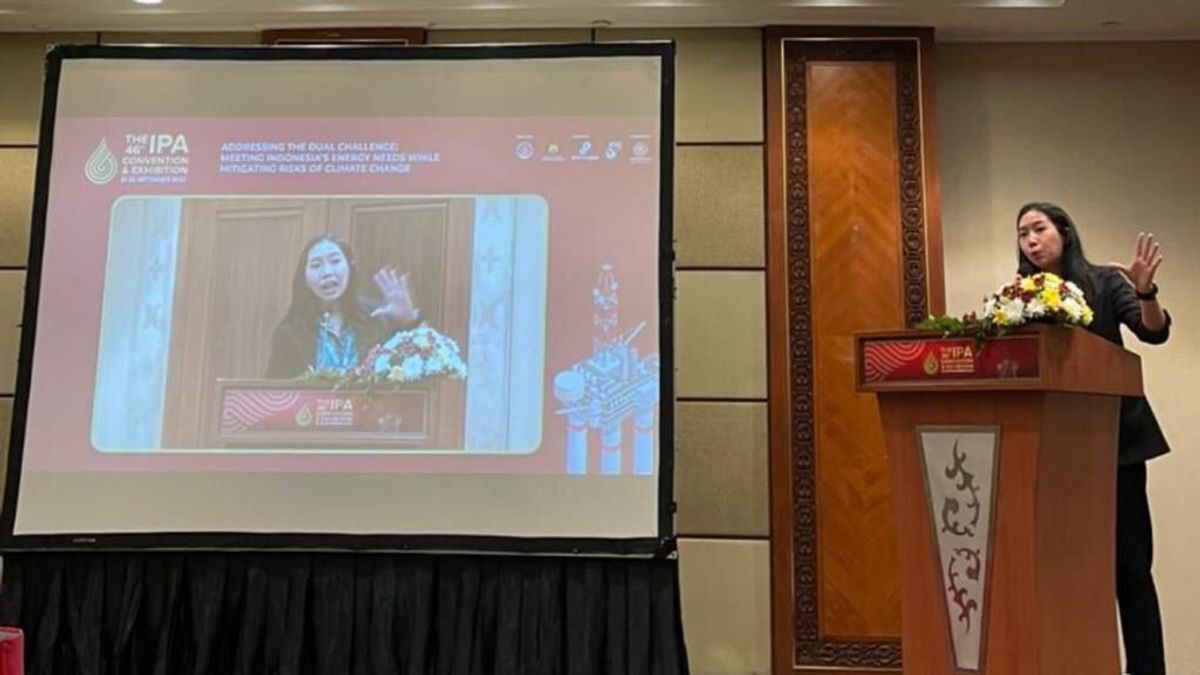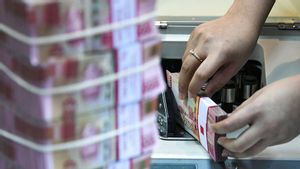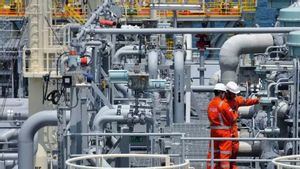JAKARTA - The Ministry of Energy and Mineral Resources (ESDM) noted that Indonesia's total oil reserves have been eroded in the past decade.
In 2011, Indonesia's oil reserves were recorded at 7.73 billion barrels.
In 2021 Indonesia's petroleum reserves are only 3.95 billion barrels, with the number of reserves proven to be 2.25 billion barrels, and 1.7 billion barrels of potential reserves.
East Kalimantan Province as one of the largest petroleum-producing regions in Indonesia has also decreased the number of oil and gas reserves.
The Central Statistics Agency (BPS) of East Kalimantan Province noted that the number of petroleum production in East Kalimantan Province continues to decline every year from 2019 by 21 million barrels to 2021 by 17 million barrels.
One of the students of the Pertamina University's Petroleum Engineering Study Program, Fransisca Indah Permatasari, proposed a solution to boost oil and gas production even though it was in an old well. His research was rewarded with the Best Oral Presentation award in The 46th IPA Convention and Exhibition competition in the 2022 Student Paper category.
I did this research by taking data in the Mahakam Block. Currently, the conditions in Mahakam Block are oil and gas wells whose age is quite old, so inevitably oil production will be in reservoirs whose depth is shallower. The challenge if you produce in shallow reservoirs, the worry that will be obtained is not oil and gas, but sand," explained Fransisca in an official statement, Friday, October 14.
To avoid this, Fransisca offered sand control methods to prevent sand from being picked up during the exploit process.
The way it works is by using water-based resin. This resin functions like glue that can bind and hold sand and rocks at the bottom of the well," said Fransisca.
The water-based resin innovation that Fransisca offers is also a solution to exploit oil and gas at a more affordable cost.
In his paper entitled Evaluation of Tight Injectivity For Sand Consumption Treatment: A Study Case in Mahakam mentioned, at least production innovation with the water-based resin method can reduce costs by up to 20 percent lower than conventional methods (solved-based resin).
If using the solvent-based resin method, 81.17 barrels is needed for its production. Meanwhile, the water-based resin method is 20 percent lower, which is only 64.08 barrels. This means that the costs required will also be lower," concluded Fransisca.
The advantage of using other water-based resins is that it is safer to inject into the well.
Because it uses fewer chemicals, the level of water-based resin viscosity becomes lower.
This can reduce the pressure required in the process of injecting resin into wells so that the oil and gas exploitation process becomes safer.
The 46th IPA Convention and Exhibition was attended by participants from various regions.
Not only followed by students, this activity was also attended by various agencies and practitioners.
In the Student Paper competition, Fransisca, representing Pertamina University, together with nine other selected universities had the opportunity to present their research at the IPA Convention and Exhibition event.
The English, Chinese, Japanese, Arabic, and French versions are automatically generated by the AI. So there may still be inaccuracies in translating, please always see Indonesian as our main language. (system supported by DigitalSiber.id)













